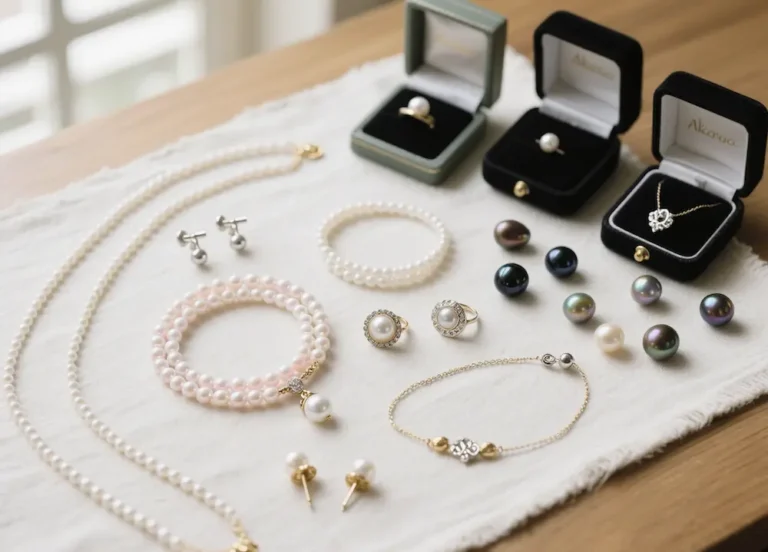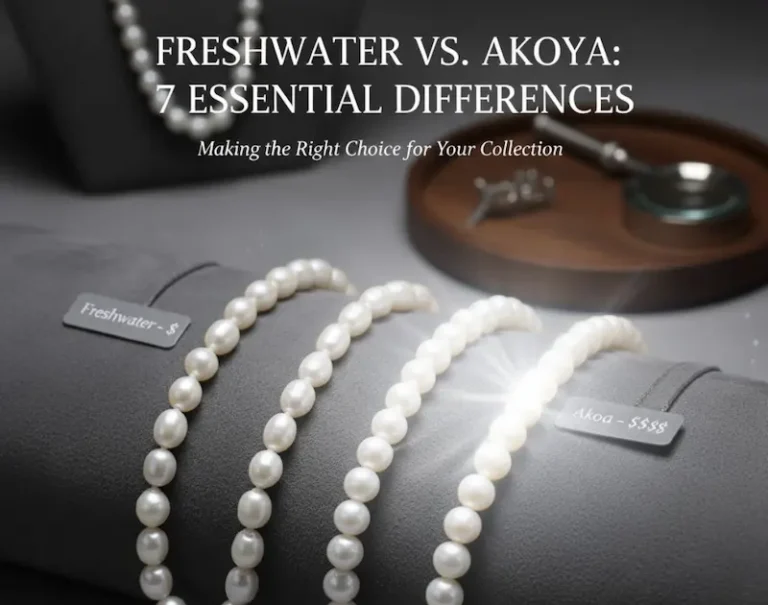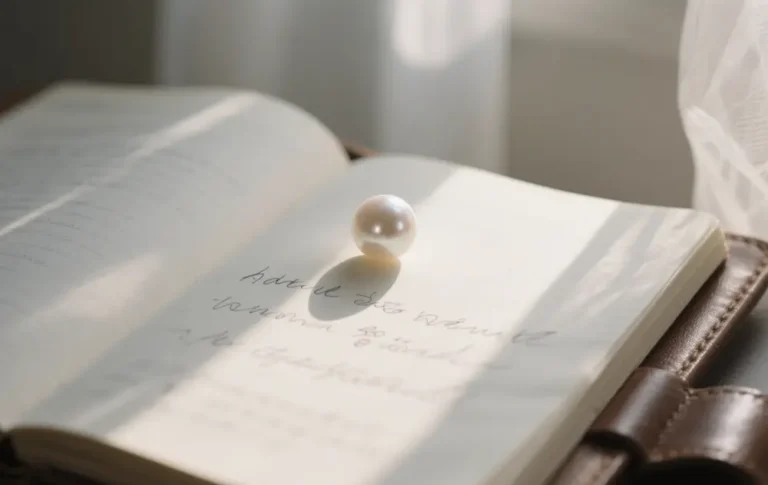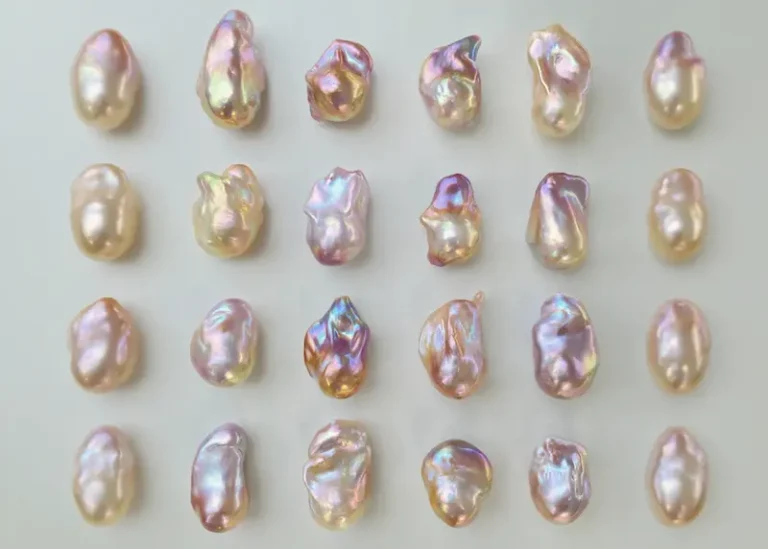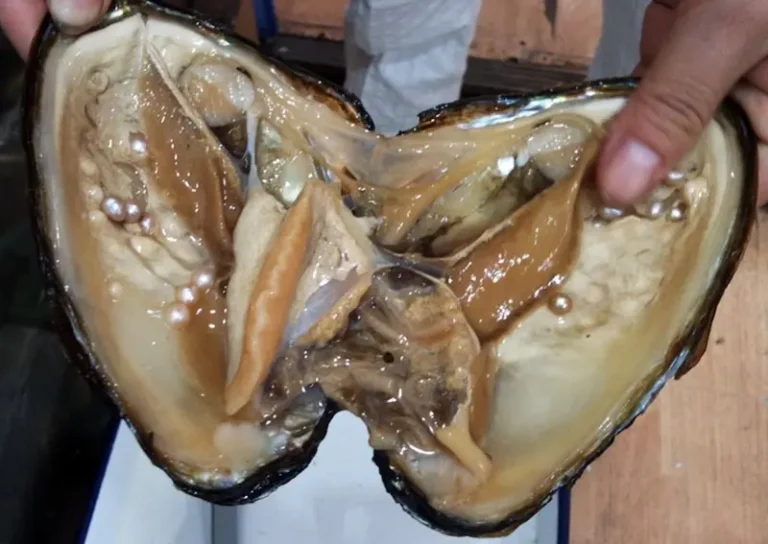Ever wonder what makes those shimmering, iridescent pearls so special? What is Pearl Oyster? The pearl oyster is the key! Deep beneath the ocean waves, these amazing creatures have silently produced some of the most valuable pearls, capturing our attention for ages.
Imagine this: You’re walking along a gorgeous beach when you notice a strange, rugged-looking shell adhered to a rock. You had no idea that you might be looking at a living treasure trove that could contain a pearl worth a fortune. The allure of pearl oysters is that they aren’t your typical clams! Do oysters make pearls? Of course!
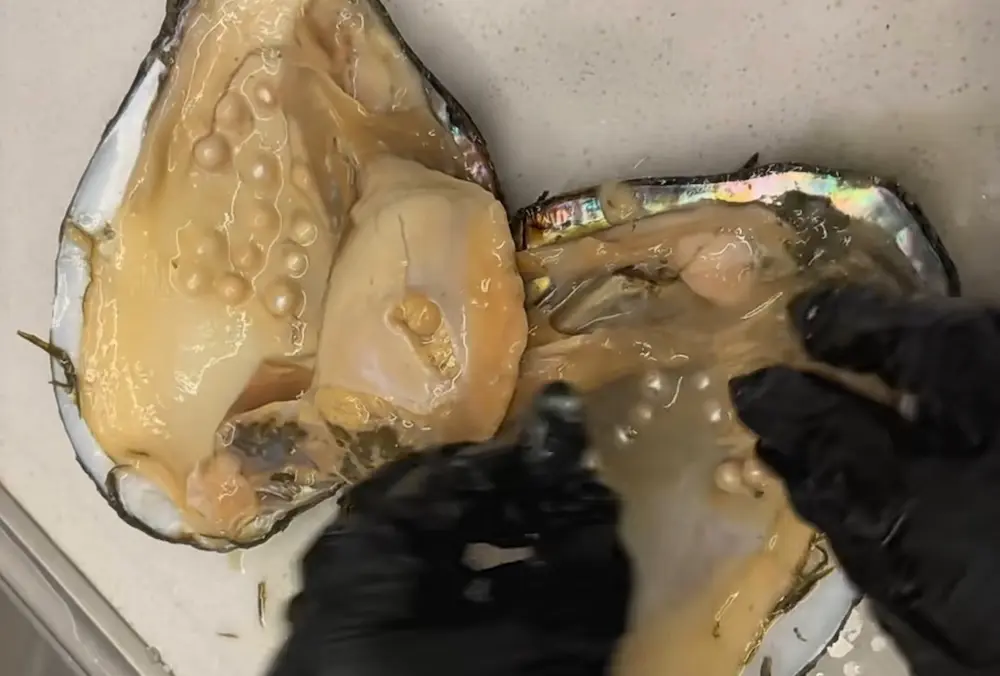
What is Pearl Oyster: The Biological Marvel Behind Nature’s Gems
All right, so tell me what is pearl oyster. They are essentially marine bivalve mollusks. They are members of the Pteriidae family and resemble sea creatures with hinged shells. Their robust nacre inner shell, also known as the “mother of pearl,” is what distinguishes them. These creatures’ soft bodies are enclosed by a shell composed of two sections, known as valves, that are held together by powerful muscles.
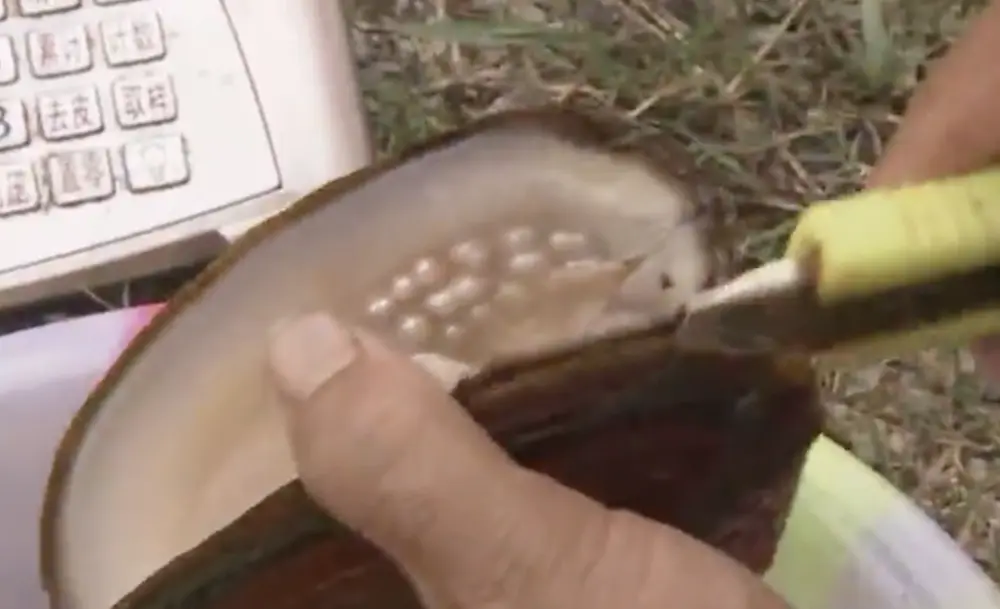
Unlike the oysters you might enjoy at a fancy restaurant, pearl oysters are completely different animals. They’re not even closely related to edible oysters! Think of them as nature’s skilled artisans, each one potentially housing a work of art that took years to create.
These animals have a mouth, an esophagus, a stomach, gonad tissue (testes or ovaries), gills, a kidney, a hepato-pancreas (a combination of liver and pancreas), and even an anus. They even possess very primitive sensorial organs like ocelii (primitive “eyes”) and chemo receptors (the equivalent of a sense of smell).
The Pearl Formation Process: Nature’s Patient Craftsmanship
Here’s where things get really interesting. What is Pearl Oyster? Pearls are made by marine oysters and freshwater mussels as a natural defence against an irritant such as a parasite entering their shell or damage to their fragile body. The oyster or mussel slowly secretes layers of aragonite and conchiolin, materials that also make up its shell.
Imagine that a small piece of sand or a small parasite gets inside the oyster’s shell. The oyster doesn’t freak out; instead, it does something amazing: it starts covering this annoying thing with layer after layer of nacre. It changes something annoying into something valuable! Depending on the type of oyster and its environment, this process can take anywhere from two to seven years.
Here’s the really cool part: each layer of nacre is unbelievably thin – we’re talking about 0.5 microns! To give you an idea, you’d need 2,000 of those layers to be as thick as a single human hair.
The 4 Most Important Types of Pearl Oysters You Should Know
What is Pearl Oyster? To truly understand pearl oysters, you’ve gotta know about the different kinds. Each one makes some of the most prized pearls out there. And each type is unique – they all have their own quirks, a preferred place to live, and the special kind of pearl they’re known for producing.
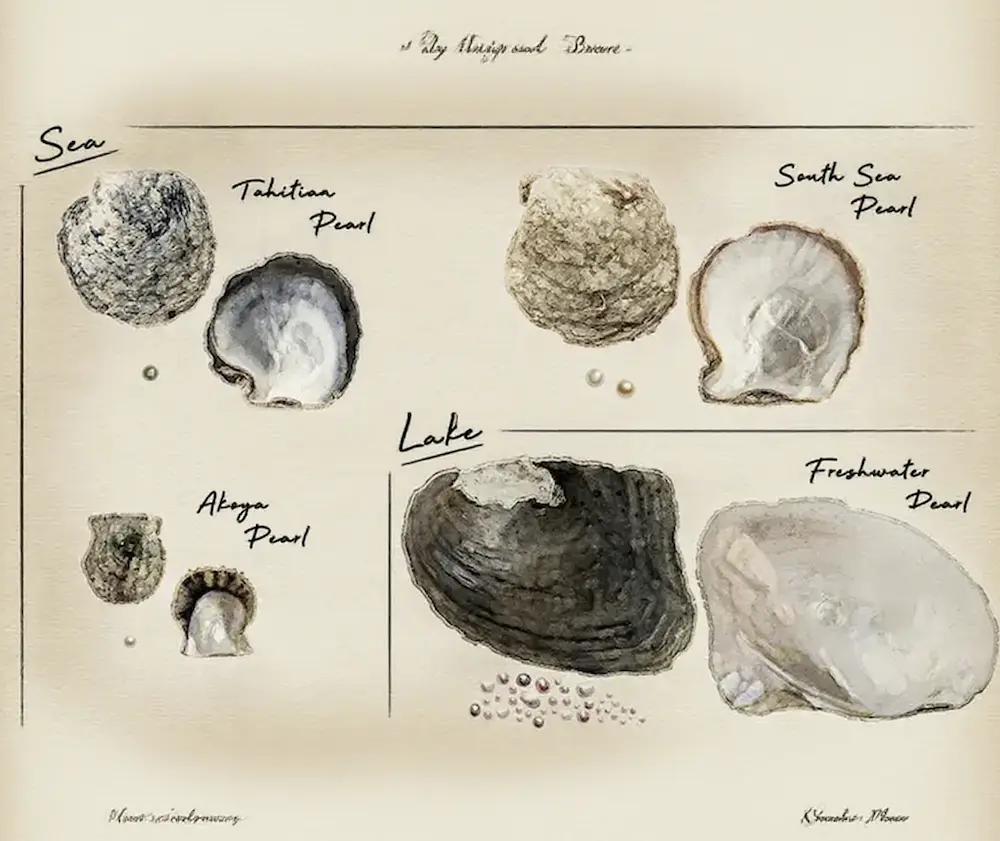
| Pearl Oyster Species | Scientific Name | Pearl Type | Average Size | Primary Location |
|---|---|---|---|---|
| Akoya Pearl Oyster | Pinctada fucata martensii | Akoya Pearls | 2-4 inches | Japan, China |
| Tahitian Pearl Oyster | Pinctada margaritifera | Tahitian Pearls | 6-8 inches | French Polynesia |
| South Sea Pearl Oyster | Pinctada maxima | South Sea Pearls | 8-12 inches | Australia, Indonesia, Philippines |
| Freshwater Pearl Oyster | Hyriopsis cumingii | Freshwater Pearls | 4-6 inches | China, USA, Japan |
Akoya Pearl Oysters: The Classic Choice
The Akoya pearl oyster (that’s Pinctada fucata martensii Dunker if you want to get technical!) is a Japanese oyster. It’s responsible for Akoya pearls, which are probably the image that pops into most people’s heads when they think of pearls. These oysters are small but surprisingly productive, creating those classic, perfectly round, shiny white or cream-colored pearls that have been used in royal jewelry for ages.
What makes Akoya pearls special? They have an incredibly sharp, mirror-like luster that’s often described as “crisp.” Working with a reputable Pearl Manufacturer ensures you get authentic Akoya pearls with this distinctive quality.
South Sea Pearl Oysters: The Giants of the Industry
The South Sea Pearl Oyster, Pinctada maxima, may reach about 12 inches in size and is the emblematic bivalve making true, valuable, old-fashioned pearls. These massive oysters are like the luxury cars of the pearl world – they produce the largest, most valuable pearls on the planet.
South Sea pearls can get HUGE – like, 20mm and bigger. The thick layers of nacre (that’s the pearly coating) give them a really soft, satiny shine that’s just captivating. A lot of collectors who are looking to buy wholesale pearls specifically want South Sea pearls because they hold their value so well.
Freshwater Pearl Oysters: The Versatile Producers
Freshwater pearl “oysters” – mostly Hyriopsis cumingii and similar types – are a whole different ballgame. Here’s a fun fact: they’re not technically oysters at all. They’re freshwater mussels! But they’ve definitely earned their spot in the pearl world because they produce so many pearls and are super versatile.
The really cool thing about freshwater pearl “oysters” is that they can produce a bunch of pearls at once – all inside one shell! Saltwater oysters usually only make one pearl at a time, but a single freshwater mussel can crank out 20-30 pearls at the same time. Because they’re so productive, freshwater pearls are easier on the wallet while still looking beautiful, with great shine and a range of colors.
Pearl Oyster Habitats and Distribution: Where These Treasures Call Home
What is pearl oyster without understanding where they live? These creatures are surprisingly picky about their neighborhoods. They need specific water temperatures, salinity levels, and food availability to thrive.
Saltwater vs. Freshwater: The Great Divide
What is Pearl Oyster? One family of nacreous pearl bivalves – the pearl oyster – lives in the sea, while the other – a very different group of bivalves – lives in freshwater; these are the river mussels such as the freshwater pearl mussel.
Saltwater pearl oysters generally thrive in environments that offer:
- Water temperatures in the range of 20-30°C (68-86°F)
- Depths of around 5-40 meters (roughly 16-130 feet)
- Good water flow and circulation
- A surface like rocks or coral reefs where they can attach themselves
Now, freshwater pearl mussels are a bit different. They do best in:
- Clean rivers and lakes
- Water that’s on the cooler side
- Bottoms that are sandy or muddy
- Spots where there’s hardly any pollution
Global Pearl Farming Locations
Okay, here’s a quick list of some of the most famous pearls and where to find them:
Asia-Pacific Region:
- Japan is known for Akoya pearls;
- Australia is known for South Sea pearls;
- China makes both freshwater and Akoya pearls;
- Indonesia and the Philippines are also sources of South Sea pearls.
Other Regions:
- French Polynesia is where Tahitian pearls come from.
- Mexico is where Cortez pearls come from.
- The United States is where freshwater pearls come from.
The Art and Science of Pearl Cultivation
What is Pearl Oyster? You need to know how hard it is to farm pearls if you want to get pearl oysters. Pearls are grown in controlled environments in the ocean, lakes, and rivers. This means putting a small irritant inside mollusks, like oysters, in a gentle way. For example, the Pinctada fucata (for Akoya pearls), Pinctada margaritifera (for Tahitian pearls), or Pinctada maxima (for South Sea pearls).
The Pearl Farming Process: From Spat to Spectacular
Pearl farming today is a very precise process that requires perfect attention to detail.
- Spat Collection: You either collect young oysters from the wild or raise them in hatcheries.
- Growing Phase: Oysters take one to three years to mature.
- Seeding Operation: It sounds easy enough, but it takes a lot of care. A small nucleus is carefully placed inside the oyster to create pearls.
- Recovery and Growth: The oysters recover from the procedure and begin coating the nucleus with nacre (the stuff that makes pearls pearly).
- Harvest: It can take two to three years for a South Sea pearl to fully develop from the moment the nucleus is implanted.
| Pearl Type | Cultivation Time | Success Rate | Average Size |
|---|---|---|---|
| Akoya | 10-18 months | 85-95% | 6-8mm |
| South Sea | 2-3 years | 60-80% | 10-15mm |
| Tahitian | 18-24 months | 70-85% | 9-12mm |
| Freshwater | 2-5 years | 90-95% | 6-12mm |
Sustainability in Pearl Farming
Modern pearl farming isn’t just about pretty jewelry; it’s becoming more eco-friendly, with many farms acting like marine sanctuaries. Pearl oysters are amazing water filters—one oyster can clean up to 50 gallons of water a day, which helps keep our oceans healthy.
The Economic Impact of Pearl Oysters
These little oysters are very important for the economy! They help a billion-dollar global industry that gives jobs and livelihoods to a lot of people, from small family farms to big businesses.
What is Pearl Oyster? Pearls usually come from faraway pearl farms, then go to processing centers, and finally end up in jewelry stores all over the world.
Market Trends and Values
The pearl market has changed a lot in recent years:
- Cultured pearls make up more than 95% of what’s sold today.
- Freshwater pearls are more popular because they’re cheaper.
- Vintage and natural pearls can sell for a lot of money.
- More and more people want to know where their pearls came from.
What Makes a Pearl Precious
When trying to figure out the quality of a pearl, here’s what to consider:
- Luster: How shiny and reflective the surface is.
- Surface Quality: How smooth and free from flaws it is.
- Shape: Round pearls are usually worth the most.
- Color: Changes based on the type of oyster and where it lives.
- Size: Bigger pearls are usually worth more.
- Nacre Thickness: Thicker nacre means the pearl will last longer and look better.
- Matching: How well the pearls in a strand or pair match.
Conservation and Environmental Challenges
To really understand pearl oyster quality, it’s important to know that these creatures are facing some serious environmental problems. Things like climate change, the oceans becoming more acidic, and pollution are all threatening pearl oyster populations.
Many pearl farms now participate in conservation efforts:
- Protecting natural oyster beds
- Breeding programs for endangered species
- Research into climate change adaptation
- Marine protected area establishment
The Future of Pearl Oysters
Scientists are working on exciting developments in pearl oyster biology:
- Genetic research to improve disease resistance
- Selective breeding for better pearl qualities
- Development of more sustainable farming practices
- Investigation into new pearl oyster species
According to research from the National Oceanic and Atmospheric Administration, understanding marine mollusk biology is crucial for maintaining healthy ocean ecosystems and supporting sustainable aquaculture practices.
FAQs:
Q: Can pearl oysters be eaten?
A: Yes, but they taste rubbery and are rarely served.
Q: Are oyster pearls expensive?
A: Rare ones are; most are small and cheap.
Q: Are oysters killed when pearls are removed?
A: Usually yes, the oyster is opened and dies.
Conclusion: What is Pearl Oyster? This creature is like nature’s patient artist, a protector of the environment, a surprising economic driver. These shellfish have been quietly making our oceans and rivers beautiful for millions of years, and their story is still going on.
There are many different kinds of pearl oysters, each with its own unique features. For example, the small Akoya oysters in Japan make round little gems, while the huge Silver-lip oysters in Australia make golden treasures. When you know what a pearl oyster is, you can appreciate not only the jewelry but also the amazing natural process and human skill that go into making each pearl.
When you see a pearl you like, whether it’s a classic necklace, a modern piece of jewelry, or an old family heirloom, think about the amazing journey it took to get there. Every pearl tells a story of time, patience, and the wonders of nature. It starts as a tiny speck inside an oyster’s shell and ends up as a beautiful gem that catches light and captures our hearts.
In the future, we need to support pearl farming that is good for the environment and conservation efforts. This will make sure that future generations can also be amazed by these creatures and the treasures they make. You need to know what is pearl oyster.
What is Pearl Oyster? If you love pearls, collect jewelry, or just like to look at beautiful things, the world of pearl oysters is always interesting. These amazing animals keep surprising scientists, making people happy, and inspiring craftspeople all over the world. They show that sometimes the most amazing things come in the most unexpected ways.

